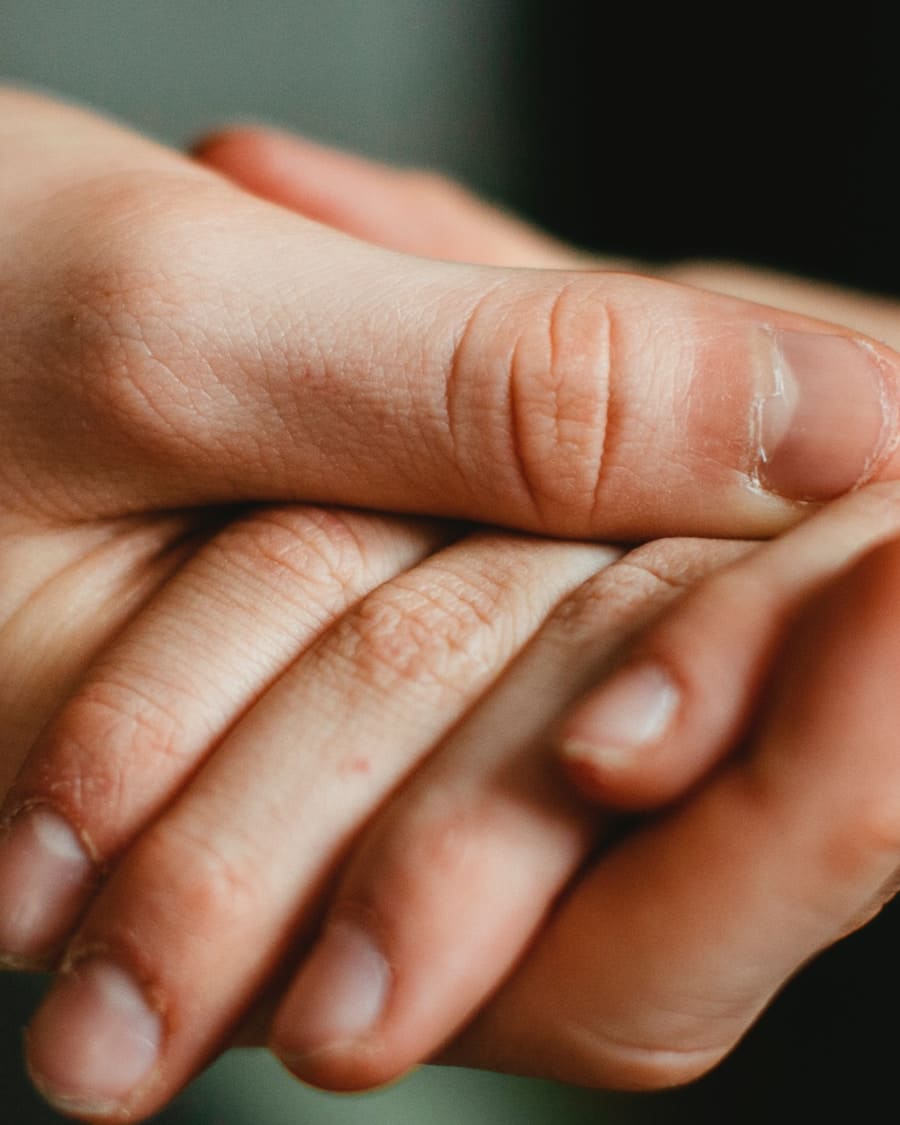The movement from living in active addiction to living a life of recovery from drug and alcohol addiction is intricate and unique to each person.
What are the Various Types of Rehab for Drug and Alcohol Addiction?
| Type of Addiction Treatment | Brief Description |
|---|---|
| Detox Facilities | Qualified medical professionals providing safe, supervised withdrawal from drugs and alcohol. |
| Inpatient Primary Care | A structured and intensive programme designed to reduce denial and get patients to take responsibility for their addiction. |
| Inpatient Secondary Care | Focuses on further stabilisation and addressing underlying trauma with a focus on long-term recovery skills development. |
| Outpatient Addiction Treatment | Allows individuals to live at home while receiving treatment, with varying intensity levels. |
| Rehab Aftercare Programs | Assisting sobriety maintenance and relapse prevention with a focus on reintegration to work and life on life’s terms. |
| Sober Living Homes / Halfway House | Provides a structured, substance-free environment for individuals transitioning back to daily life. |
| Ongoing Recovery | Involves continual personal growth and development in sobriety, including recovery community engagement and personal development activities. |
Detox Facilities for Drug and Alcohol Rehabilitation
Detox does not equal treatment and abstinence does not equal recovery. Detoxification is just the first step in the treatment process. Detox facilities provide a safe environment for individuals to withdraw from substances under medical supervision.
Detox facilities are designed to manage withdrawal symptoms and prepare individuals for treatment. Detoxification only addresses one component of the illness, the physical. Addiction effects the mental, emotional, and spiritual too.
Table 1: Overview of Detox Facilities
| Facility Features | Services Provided | Duration |
| Medical Supervision | 24-hour medical care and medication-assisted treatment | Typically 5-10 days |
| Supportive Environment | Counselling and support groups | Varies |
| Customized Care | Tailored detox plans based on individual needs | Depends on substance and usage pattern |
Inpatient Primary Care – Residential Addiction Treatment
 Inpatient primary care offers a structured environment with intensive treatment programs. The main objective in Primary Care rehab is to reduce the denial gap: how the addicted patient perceives their problems – and how bad it really is!
Inpatient primary care offers a structured environment with intensive treatment programs. The main objective in Primary Care rehab is to reduce the denial gap: how the addicted patient perceives their problems – and how bad it really is!
There’s always a distance between the patient’s perception of their addiction and the reality of their situation. People cannot remain addicted to alcohol and other drugs without justifying and rationalising their drinking and using. This is critical work because without the addict or alcoholic realising how bad things are, they won’t take responsibility for doing what it takes to get into recovery.
Without completing Primary Care, patients cannot move into the other phases of treatment.
Inpatient Primary Care: A Cornerstone of the Types of Rehab for Drug and Alcohol Addiction
Effective Addiction Treatment
Inpatient primary care in the context of residential addiction treatment represents a critical approach to helping individuals overcome addiction. This comprehensive model of care encompasses a range of medical and therapeutic services delivered in a residential setting, offering a structured environment conducive to recovery.
Understanding Inpatient Primary Care in Addiction Treatment
Inpatient primary care in addiction treatment refers to the intensive, residential care provided to individuals battling addiction. This form of treatment is designed for those who require round-the-clock medical supervision and support. Key components of inpatient primary care include medical detoxification, individual and group therapy, medication management, and aftercare planning.
- Medical Detoxification: The first step in most inpatient treatment programs, detoxification, is medically supervised to ensure safety and comfort. It addresses the physical aspects of addiction, preparing patients for the therapeutic phase of treatment.
- Therapeutic Interventions: These involve a variety of treatment modalities, including cognitive-behavioural therapy (CBT), Motivational Enhancement therapy (MET), Twelve Step Facilitation (TSF) family therapy, and other evidence-based practices, aimed at addressing the root causes of addiction.
- Medication Management: For some patients, medications are an essential part of treatment, assisting in managing withdrawal symptoms or co-occurring mental health conditions.
- Aftercare Planning: A critical part of inpatient primary care, aftercare planning prepares individuals for life post-treatment, reducing the risk of relapse.
The Role of Medical Aid in Covering Inpatient Treatment
Medical Aid coverage plays a pivotal role in accessing inpatient primary care for addiction treatment. For instance, as discussed in “Does Discovery Health Pay for Rehab?“, many medical aid plans cover a large portion of the costs associated with inpatient addiction treatment. Understanding your medical aid benefits is crucial in planning for treatment and ensuring you receive the care you need.
Primary Care in Addiction Treatment: A Holistic Approach
 At the heart of inpatient treatment is the concept of primary care, which emphasizes a holistic approach to recovery. Primary Care goes beyond addressing the physical aspects of addiction, focusing also on mental health, emotional well-being, and social factors contributing to substance use disorders. By addressing these multifaceted needs, inpatient primary care facilitates a more comprehensive and sustainable recovery.
At the heart of inpatient treatment is the concept of primary care, which emphasizes a holistic approach to recovery. Primary Care goes beyond addressing the physical aspects of addiction, focusing also on mental health, emotional well-being, and social factors contributing to substance use disorders. By addressing these multifaceted needs, inpatient primary care facilitates a more comprehensive and sustainable recovery.
Inpatient primary care in residential addiction treatment offers a structured, supportive environment essential for overcoming addiction. By integrating medical, therapeutic, and holistic approaches, it provides the foundation for long-lasting recovery. Understanding the role of medical aid in covering treatment costs and the comprehensive nature of primary care are key steps in understanding addiction rehab.
Table 2: Comparison of Inpatient Primary Care Programs
| Program Type | Treatment Approach | Length of Stay |
| Traditional Inpatient | 12-Step and holistic therapies | 28-90 days |
| Long-term Residential | Extended care with deeper therapeutic engagement | 90-180 days |
| Specialized Residential | Programs for specific populations (e.g., youth, women) | Varies |
Inpatient Addiction Secondary Care Treatment: Navigating the Next Phase of Recovery
Inpatient Addiction Secondary Care is a vital phase in the continuum of addiction treatment, especially as we see evolving trends and approaches in 2024. This level of care serves as a bridge between intensive inpatient treatment and a return to everyday life, offering continued support and therapy in a less restrictive environment.
The Evolving Landscape of Inpatient Addiction Secondary Care in 2024
Recent trends in the addiction treatment landscape, particularly for inpatient secondary care, reflect an increased emphasis on personalized treatment plans, integration of technology in therapy, and a focus on holistic healing.
- Personalised Treatment Plans: Tailoring recovery programs to individual needs, considering factors like addiction severity, mental health issues, and personal circumstances.
- Technology Integration: Utilizing digital tools and telehealth services to enhance therapy and provide continuous support.
- Holistic Approach: Incorporating practices like mindfulness, nutrition, and physical activities into the recovery process.
Key Components of Secondary Care in Addiction Treatment
Inpatient secondary care addiction facilities focus on several core components:
- Therapeutic Services: Continuing therapy sessions, including individual and group therapies, to address underlying issues of addiction.
- Skill Development: Offering programs that help develop life and coping skills essential for long-term sobriety.
- Relapse Prevention: Educating on strategies to handle triggers and prevent relapse.
- Aftercare Planning: Preparing for the transition to outpatient care or sober living environments.
The Role of Facilities in Secondary Care
 The role of the physical environment in secondary care cannot be overstated. Facilities must be conducive and supportive to significantly enhance the recovery journey. Features such as comfortable living spaces, recreational areas, and serene surroundings contribute to the healing process.
The role of the physical environment in secondary care cannot be overstated. Facilities must be conducive and supportive to significantly enhance the recovery journey. Features such as comfortable living spaces, recreational areas, and serene surroundings contribute to the healing process.
Challenges and Opportunities in 2024
The field of inpatient secondary care is not without its challenges. However, 2024 brings opportunities for improvement, including:
- Expanded Medical Aid Coverage: With changes in healthcare policies, there’s potential for better medical aid paying for individual therapy and group therapy in secondary care.
- Increased Accessibility: The rise of telehealth services may bridge gaps in accessibility, offering support to those in remote areas.
- Enhanced Community Integration: Developing community networks that support individuals post-treatment, ensuring a smoother transition.
Inpatient Addiction Secondary Care treatment in 2024 is a dynamic field, adapting to the changing needs of individuals in recovery. By focusing on personalized care, embracing technology, and fostering holistic healing in supportive environments. Secondary care is positioned to be a crucial part of the recovery journey.
Table 3: Inpatient Secondary Care Features
| Feature | Description |
| Transitional Care | A step-down from primary care with continued therapy |
| Life Skills Training | Focus on developing skills for sober living |
| Continued Therapy | Group and individual sessions for deeper healing |
Secondary care is crucial for individuals needing extra time and support in their recovery journey.
Outpatient Addiction Treatment
Outpatient addiction programs offer flexibility, allowing individuals to live at home while receiving treatment. Outpatient treatment is suitable for those with strong support systems at home.
Embracing the Shift to Outpatient Addiction Treatment in 2024
The landscape of outpatient addiction treatment has witnessed significant transformations in 2024, adapting to the evolving needs of individuals seeking recovery from substance use disorders.
Current Trends in Outpatient Addiction Treatment
- Increased Focus on Personalized Treatment Plans: Outpatient programs are now more tailored to individual needs, considering factors like the severity of addiction, mental health issues, and personal life circumstances.
- Integration of Technology: Advances in digital tools and telehealth services enhance therapy and provide continuous support.
- Data-Driven Outreach: Leveraging data for targeted outreach helps in creating more effective treatment plans and reaching the right audience.
- Expansion of Insurance Coverage: Major changes in Medicare and other insurance programs now include a wider range of outpatient services, increasing accessibility for more individuals.
Key Features of Outpatient Treatment Programs
Outpatient Treatment Programmes typically include:
- Flexible Scheduling: Allowing patients to maintain their daily responsibilities while receiving treatment.
- Therapeutic Services: Continuing therapy sessions, including individual and group therapies, to address the underlying issues of addiction.
- Relapse Prevention Education: Educating patients on strategies to handle triggers and maintain long-term sobriety.
Comparing Inpatient and Outpatient Treatment
 Understanding the differences between inpatient and outpatient treatment is crucial. Inpatient Versus Outpatient Rehab provides a comprehensive comparison, highlighting that outpatient treatment offers more flexibility and is often suited for those with less severe addiction and good external suppoprts.
Understanding the differences between inpatient and outpatient treatment is crucial. Inpatient Versus Outpatient Rehab provides a comprehensive comparison, highlighting that outpatient treatment offers more flexibility and is often suited for those with less severe addiction and good external suppoprts.
Challenges and Opportunities
Despite its benefits, outpatient treatment faces challenges such as ensuring continuous engagement and dealing with social stigma. However, 2024 presents opportunities for improvement, including more personalized care and the incorporation of innovative marketing strategies to reach and engage with patients more effectively.
Outpatient addiction treatment in 2024 represents a dynamic and evolving field. By focusing on personalized care, embracing technology, and leveraging data-driven insights, these programs are well-positioned to meet the diverse needs of individuals seeking recovery.
Table 4: Comparison of Outpatient Programs
| Program Type | Intensity | Schedule |
| Standard Outpatient | Low intensity, ideal for mild addictions | Weekly sessions |
| Intensive Outpatient (IOP) | Higher intensity, more frequent sessions | 2-5 days per week |
| Partial Hospitalization (PHP) | Hospital-level care in an outpatient setting | Daily sessions |
Rehab Aftercare Programs
Aftercare is essential for maintaining sobriety and preventing relapse.
The Evolution and Importance of Rehab Aftercare Programs in 2024
Table 5: Rehab Aftercare Options
| Option | Description |
| Support Groups | Regular meetings with peers in recovery (e.g., AA, NA) |
| Continuing Therapy | Ongoing counselling sessions |
| Relapse Prevention Education | Learning strategies to maintain sobriety |
Effective aftercare helps individuals integrate into society as sober individuals.
Sober Living Homes / Halfway House
Sober living homes provide a structured, substance-free environment for individuals transitioning back to daily life.
Sober Living Homes and Halfway Houses: Crucial Stepping Stones in Recovery
In 2024, sober living homes and halfway houses continue to play an indispensable role in supporting individuals recovering from addiction. These facilities provide a bridge between intensive addiction treatment and a return to everyday life.
Understanding Sober Living Homes and Halfway Houses
Sober living homes offer a supportive, substance-free environment for individuals committed to maintaining sobriety. They emphasize personal responsibility, accountability, and community support. On the other hand, halfway houses often serve as a transitional phase, especially for individuals coming from inpatient treatment or correctional facilities, focusing on reintegrating residents into society.
The Role and Benefits of Sober Living Homes
- Safe and Structured Environment: These homes provide a substance-free environment, helping residents avoid triggers and temptations.
- Community and Peer Support: Living among peers facing similar challenges fosters a supportive community that aids in the recovery journey.
- Ongoing Therapeutic Support: Many sober living homes offer counselling and group therapy sessions, enhancing long-term sobriety.
- Skill Development: Programs focusing on life skills like financial management and job hunting prepare residents for independent living.
The Importance of Halfway Houses in Recovery
- Transition to Independent Living: They offer a gradual transition to daily life, helping individuals adapt to new routines and responsibilities.
- Social Support and Accountability: The communal living aspect provides a network of support and accountability among residents.
- Access to Resources: Halfway houses connect residents to community resources such as employment assistance and support groups.
Choosing the Right Facility
When selecting a sober living home or halfway house, factors like the level of structure, type of support offered, and proximity to family and employment opportunities should be considered. The articles “Halfway Housing” and “Halfway House Johannesburg” provide insights into the available options and services in these facilities.
Sober living homes and halfway houses are vital in the continuum of care for individuals recovering from addiction. By offering safe environments, structured support, and community networks, they play a crucial role in facilitating successful transitions to sober, independent living.
Table 6: Features of Sober Living Homes
| Feature | Description |
| Supervised Living | A drug-free environment with rules and responsibilities |
| Peer Support | Living among others in recovery |
| Independence Building | Gradual increase in personal responsibility and freedom |
These homes are ideal for those who need a gradual transition to independent living.
Ongoing Addiction Recovery in 2024
 Ongoing recovery involves continual personal growth and development in sobriety. This extends well beyond the initial stages of treatment. New trends and approaches have emerged, enhancing the journey towards lasting sobriety and well-being.
Ongoing recovery involves continual personal growth and development in sobriety. This extends well beyond the initial stages of treatment. New trends and approaches have emerged, enhancing the journey towards lasting sobriety and well-being.
Emerging Trends in Ongoing Addiction Recovery
- Innovative Approaches to Disclosure and Communication: Programs like “Disclosing Recovery” focus on improving communication about recovery, particularly in opioid use disorder (OUD), guiding individuals to effectively share their recovery status with their support networks.
- Personal Development Goals Post-Treatment: Setting achievable goals in various life aspects such as physical and mental health, career, relationships, financial management, and personal growth is becoming increasingly vital.
- Technological Advancements in Recovery Management: The integration of technology, like smart monitoring systems and mobile apps, is transforming how individuals track and manage their recovery journeys.
The Importance of a Structured Primary Treatment Process
The initial phase of recovery, as outlined in “Primary Addiction Treatment Process,” lays the foundation for ongoing recovery. This phase typically involves detoxification, counselling, and therapy, addressing both the physical and psychological aspects of addiction.
Specialized Treatment for Substance-Specific Recovery
Different substances require tailored treatment approaches. Drug Addiction Treatment at Changes Rehab focuses on specific strategies and therapies best suited for drug addiction recovery. Similarly, “Alcohol Rehab: 12-Step Power” highlights the effectiveness of the 12-step program in alcohol addiction recovery.
Ongoing Support and Community Involvement
- Continued Therapeutic Support: Engaging in ongoing therapy, whether individual or group sessions, is crucial for addressing underlying issues and developing healthier coping mechanisms.
- Community and Peer Support: Joining support groups and sober communities provides a network of individuals who understand and share the recovery journey.
- Lifestyle Changes and Holistic Approaches: Incorporating healthy lifestyle changes, mindfulness practices, and holistic therapies like yoga and meditation can significantly aid in long-term recovery.
Relapse Prevention and Long-Term Sobriety
- Understanding and Identifying Triggers: Learning to recognize and manage triggers is essential in preventing relapse.
- Developing a Relapse Prevention Plan: A well-structured plan that includes coping strategies and steps to take in case of potential relapse is vital.
- Regular Check-ins and Accountability: Regular self-assessment and accountability, possibly through a mentor or support group, help maintain focus on recovery goals.
Ongoing addiction recovery in 2024 is marked by an emphasis on personalization, technological integration, and comprehensive support systems. Embracing these evolving trends and approaches, individuals in recovery can build a fulfilling and sustainable life beyond addiction.
Table 7: Ongoing Recovery Options
| Option | Description |
| Personal Development | Activities and therapies that promote personal growth |
| Spiritual Practices | Incorporation of spiritual or mindfulness practices |
| Community Engagement | Involvement in sober community activities and service |
Long-term recovery is a journey of ongoing personal and spiritual growth.
How Does Rehab Work?
The Admission Process
The journey to recovery begins with the admission process, which is designed to assess the individual’s needs and determine the most suitable treatment plan.
Table 8: Steps in the Admission Process
| Step Number | Description |
| 1. Initial Contact | First interaction, often via phone or online inquiry, where basic concerns and needs are discussed. |
| 2. Assessment | A comprehensive evaluation of the individual’s addiction, health status, and psychological well-being. |
| 3. Insurance and Financial Planning | Discussion of costs, insurance coverage, and financial options. |
| 4. Treatment Planning | Developing a personalized treatment plan based on the assessment. |
| 5. Admission | Finalizing paperwork and formally entering the program. |
 The admission process is critical in laying the groundwork for a successful recovery journey. It involves open and honest communication, a thorough assessment of the individual’s condition, and a careful consideration of financial aspects.
The admission process is critical in laying the groundwork for a successful recovery journey. It involves open and honest communication, a thorough assessment of the individual’s condition, and a careful consideration of financial aspects.
Your First 24 Hours in Rehab
The first 24 hours in rehab are crucial for setting the tone of the recovery process. Patients typically undergo a medical check-up, are introduced to the staff and their peers in recovery, and receive an orientation of the facility. This period is designed to make individuals feel safe and informed about the treatment process.
A Typical Day in Rehab
A day in rehab is structured and revolves around various therapies and activities designed for recovery.
Table 9: Structure of a Typical Day in Rehab
| Time of Day | Activity |
| Morning | Wake-up call, meditation or exercise, and breakfast |
| Mid-Morning | Group therapy session focusing on topics like coping strategies, relapse prevention, and emotional regulation |
| Afternoon | Individual counseling sessions, specialized therapy (like cognitive-behavioral therapy), and skill-building workshops |
| Evening | Recreational time, 12-step meetings, or support groups, followed by personal time and lights out |
This structured routine helps patients develop new habits and coping mechanisms essential for long-term sobriety.
Specialized Programs
Rehabs often offer specialized programs catering to specific needs or populations, such as gender-specific programs, programs for young adults, or those addressing specific types of addiction.
Table 10: Types of Specialized Programs
| Program Type | Target Group |
| Gender-Specific | Men or Women-only groups focusing on issues pertinent to each gender |
| Youth Programs | Tailored for adolescents and young adults, addressing age-specific challenges |
| Executive Programs | Designed for professionals, offering privacy and the ability to maintain work responsibilities |
These programs provide an environment where individuals can feel more comfortable and understood, enhancing the effectiveness of the treatment.
Dual Diagnosis Rehab / Co-occurring Treatment
 Dual diagnosis programs are essential for individuals who suffer from a substance use disorder and a co-occurring mental health disorder, such as depression, anxiety, or bipolar disorder. These programs address both conditions simultaneously, recognizing that untreated mental health issues can often lead to relapse.
Dual diagnosis programs are essential for individuals who suffer from a substance use disorder and a co-occurring mental health disorder, such as depression, anxiety, or bipolar disorder. These programs address both conditions simultaneously, recognizing that untreated mental health issues can often lead to relapse.
How to Find a Drug or Alcohol Rehab Program
Finding the right rehab program is crucial and involves considering factors like the type of addiction, the severity of the addiction, personal preferences, and financial capability. Researching different facilities, reading reviews, and consulting with healthcare professionals can aid in this decision. It’s important to choose a program that resonates with the individual’s specific needs, ensuring a more effective treatment journey.
Getting Admitted to Rehab and Starting Addiction Treatment
Getting admitted to rehab typically follows the steps outlined in the admission process. Once admitted, patients will start their customized treatment plan, which may include detoxification, therapy sessions, group meetings, and other activities as prescribed in their treatment plan. The goal is to equip individuals with the tools and skills needed for recovery and to address the root causes of their addiction.
Changes Addiction Rehab Locations
ChangesRehab.co.za offers various locations, each providing unique services tailored to meet the diverse needs of individuals seeking recovery from addiction.
Table 11: Location Overview
| Location | Services Offered |
| Location A | Comprehensive inpatient and outpatient programs, specializing in dual diagnosis treatment |
| Location B | Luxury rehab facilities with holistic treatment approaches, including yoga and meditation |
| Location C | Focused on young adults, offering educational programs alongside addiction treatment |
Each location is designed to provide a supportive environment that fosters growth and healing, equipped with experienced staff dedicated to the recovery journey of each individual.
Conclusion
Embarking on the path to recovery from drug and alcohol addiction is a significant step, requiring courage and commitment. Understanding the various rehabilitation programs available is vital in choosing the right path. From detox facilities to ongoing recovery options, each phase of treatment is designed to address specific aspects of addiction and its underlying causes.
The journey through rehab is structured to provide not just a cessation of substance use but a transformation of the individual’s life. It involves learning new coping skills, understanding the root causes of addiction, and building a supportive network for ongoing sobriety. The role of specialized programs and dual diagnosis treatment in addressing individual needs cannot be overstated.
Finding the right rehab program, such as those offered by Changes Addiction Rehab, is a personalized process. It involves considering various factors like the type of addiction, personal circumstances, and specific health needs. The journey from admission to ongoing recovery is filled with challenges and growth opportunities. It’s a path towards not just sobriety but also towards a renewed sense of self and purpose.
Recovery is a process, not an event, that goes beyond physical detoxification. It’s about emotional and psychological healing and rebuilding one’s life with new, healthier habits and relationships. This comprehensive guide aims to provide a clear roadmap for that journey, offering insights into the types of rehab for drug and alcohol addiction and the transformative process of recovery.
Remember, each individual’s path to recovery is unique, but the destination of a healthier, sober life is a shared goal. With the right support and treatment, recovery is not just possible; it’s within reach.


